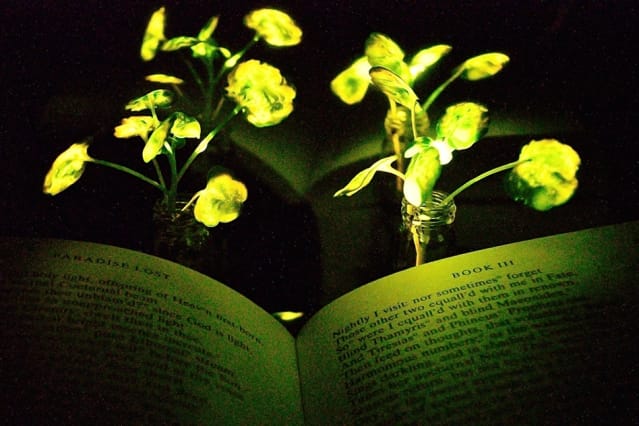MIT scientists create plants that can glow in dark
Scientists from Massachusetts Institute of Technology (MIT), US have found a novel way to induce plants to give off dim light by embedding specialised nanoparticles into their leaves.
The purpose of this experiment was to make plant function as a desk lamp, powered by the energy metabolism of the plant itself and not by electricity connection.
Key Facts
To create the glowing plants, scientists has used to luciferase, an enzyme that gives fireflies their glow. Luciferase acts on molecule called luciferin, causing it to emit light. Moreover, they had used another molecule called co-enzyme A which helps process along by removing reaction by-product that can inhibit luciferase activity.
They had packaged each of these three components into silica nanoparticle carrier about 10 nanometres in diameter to carry luciferase. They also used slightly larger particles of the polymers PLGA and chitosan to carry luciferin and coenzyme A, respectively.
To get the nanoparticles particles into plant leaves, scientists first had suspended particles in solution. Then plants were immersed in solution and later exposed to high pressure. It allowed particles to enter leaves through tiny pores called stomata.
Particles releasing luciferin and coenzyme A were designed to accumulate in extracellular space of mesophyll, an inner layer of leaf, while smaller particles carrying luciferase enter cells that make up mesophyll. The PLGA particles gradually released luciferin in solution, which then entered plant cells, where luciferase performs chemical reaction that makes luciferin glow. In this experiment, plants glowed for about 45 minutes.
Significance
It is considered as major step towards using plants to illuminate the workspace. This technology can be used to provide low-intensity indoor lighting, or to transform trees into self-powered street lights.
Month: Current Affairs - December, 2017


